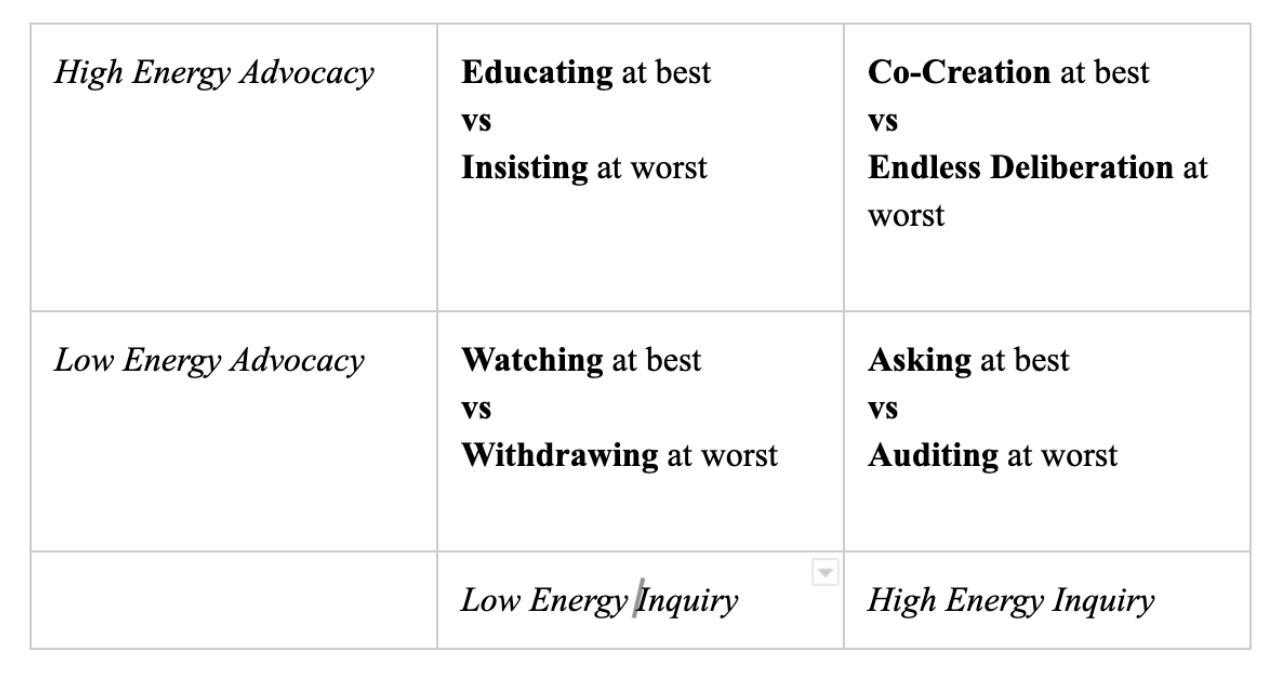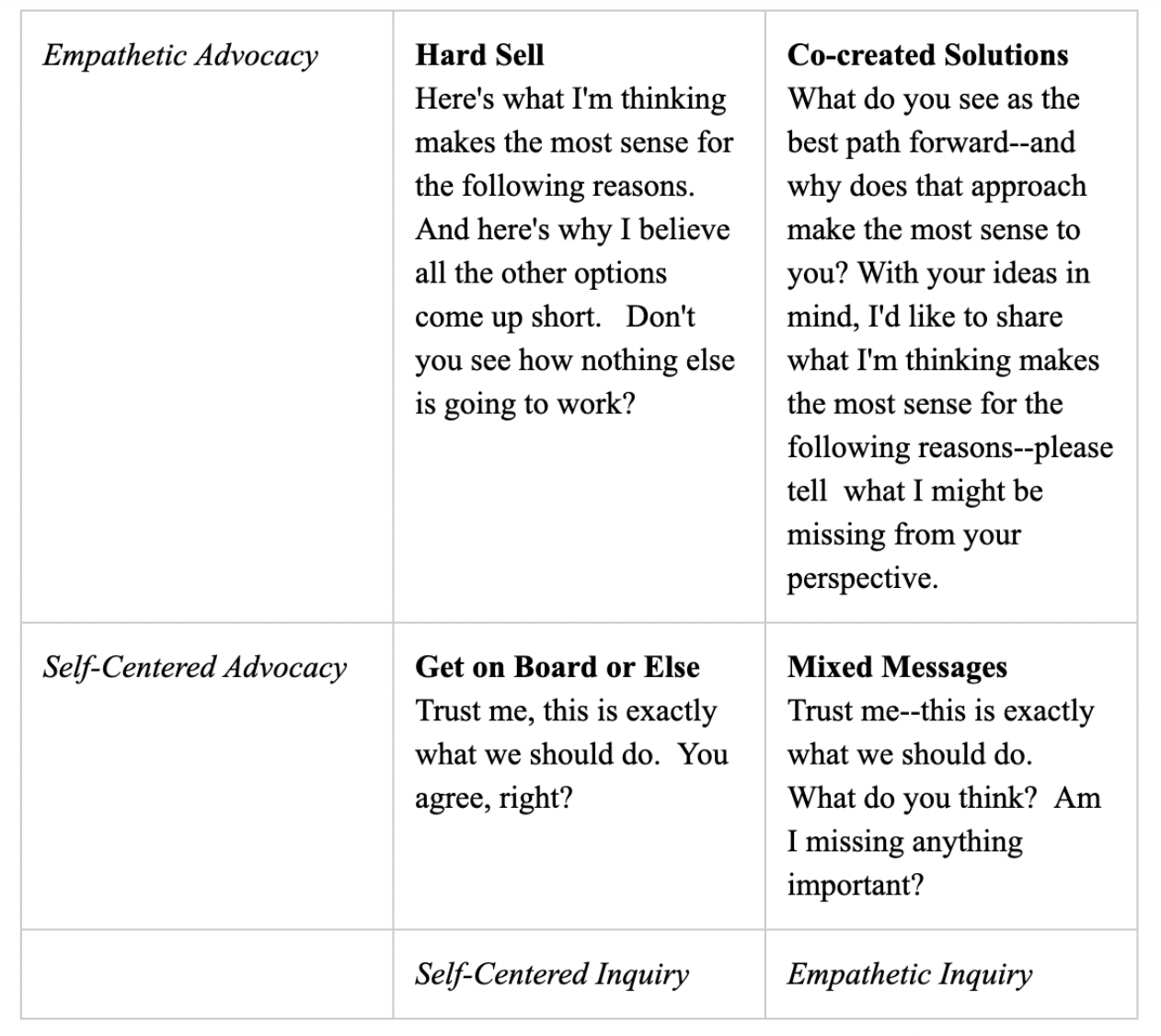5 Tools for High Stakes Communication: #5 Advocacy and Inquiry
Jun 22, 2022Advocacy and Inquiry: Balancing Energy and Empathy
How well are you balancing advocacy and inquiry in your high stakes conversations?
Effective interactions require a balance between sharing your views clearly and listening empathetically to others. If this balance gets skewed one way or the other, it’s that much harder to land in the green zone for collaborative problem solving.
This is the premise behind the 5th key tool for high stakes communications. Like a number of the other tools featured in this series of posts, this one was pioneered by Harvard professor Chris Argyris, beginning in the 1970s .
Becoming familiar with this tool and practicing it is important because in a real, high stakes conversation, we often find it very hard to achieve this balance between inquiry and advocacy. A great way to build your skills here is to reconstruct conversations that went awry using the Left Hand Column/Right Hand Column tool. Not only can you use the LHC/RHC tool to surface your unspoken thoughts and feelings, you can also use it to check for the balance of advocacy and inquiry in the conversation.
The first step: balance the energy of your advocacy and inquiry
How actively are you advocating for your own views, and how actively are you inquiring about the other person’s views? Examining the level of energy you are bringing to the conversation and how you are balancing between these two conversational roles is the starting point.

As this chart illustrates, there’s an opportunity for at least some form of positive interaction in each of these four quadrants, even though high energy inquiry combined with high energy advocacy yields the greatest benefits. For example, when you are mediating between colleagues, it may be appropriate for you to dial down both your advocacy and your inquiry and simply play the role of watching their interaction. Similarly, when you are tasked with interviewing an expert as part of a research project, it makes sense for you to focus your energy on inquiry and not on sharing your own views. But if you are seeking a lasting, co-created solution you’ll need to bring a balance of energized advocacy and inquiry to the interaction.
You can also see that in each quadrant there is also a less functional possibility. For example, if you show up in a high stakes conversation by strongly articulating your own views without doing much inquiry about the other person’s views, you might end up not getting through at all and be stuck fruitlessly insisting on your views. So, how do you avoid the worst case ends of the spectrum? This comes with the second step of this process.
The second step: elevate your empathy
Ensuring that you are bringing empathy for the other person into the conversation is the second key step.
Bringing empathy to your advocacy means that you state your views in a way that the other person can really understand—you are empathizing with their experience as a listener and fully narrating your own reasoning process so they don’t have to struggle to fill in the blanks. Bringing empathy to your inquiry means that you start out by asking for the other person’s views with genuine curiosity, actively seeking insights around what you might not see yourself. As the chart below illustrates, engaging in empathetic advocacy and inquiry is the way you can co-create solutions that have the greatest likelihood of lasting.

Practice Makes Progress
It takes time to incorporate these five tools into your repertoire because these skills go against our most primitive fight or flight wiring. This means they don’t come naturally; they have to be learned and practiced. But the reward is worth it: the opportunity to innovate and collaborate precisely when we are otherwise most likely to get hijacked by our own fight or flight response. This is how you truly live up to the commitment of treating others with consideration not contempt, and in turn bring both greater joy and impact to your giving.
Stay connected with news and articles
Join us to receive the latest news and updates from our team.
Don't worry, your information will not be shared, and you can unsubscribe at any time
We hate SPAM. We will never sell your information, for any reason.

